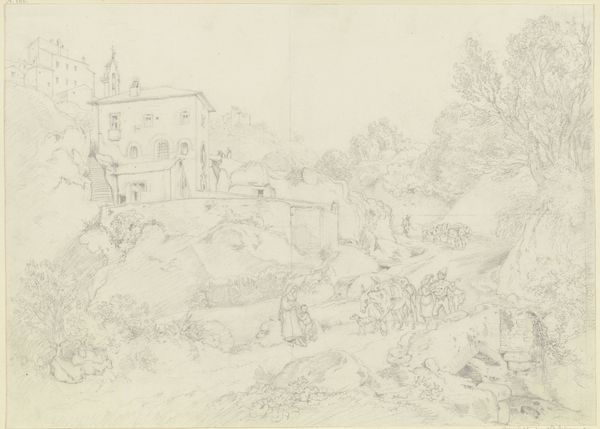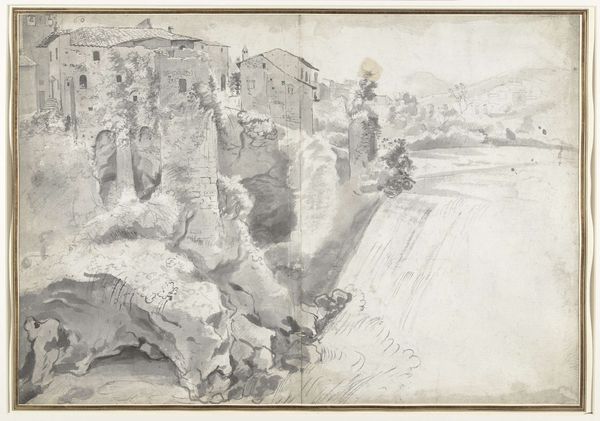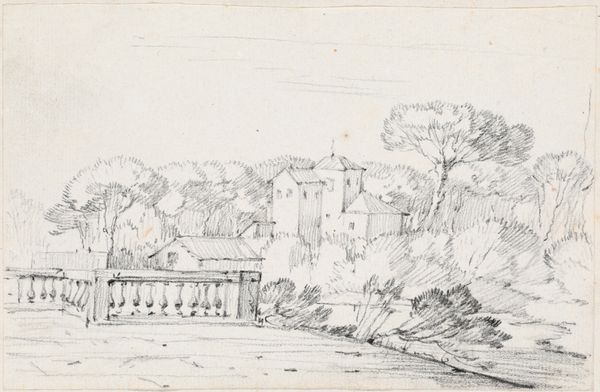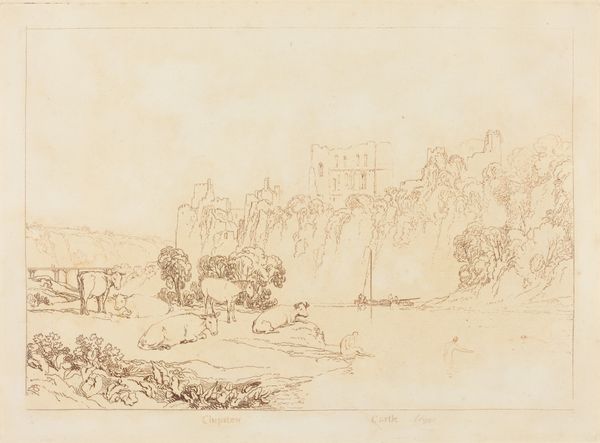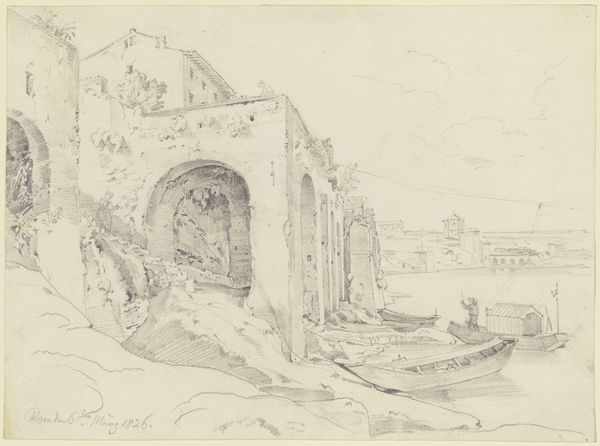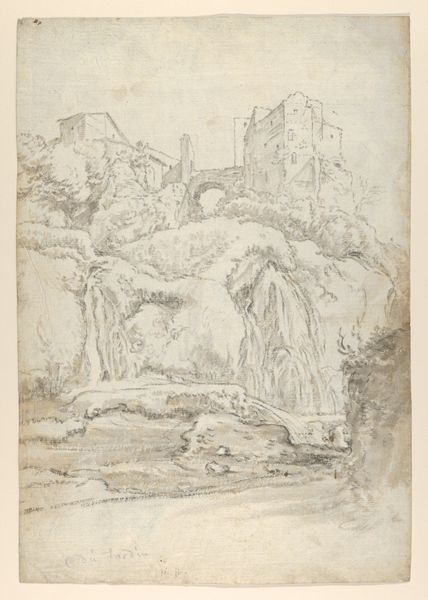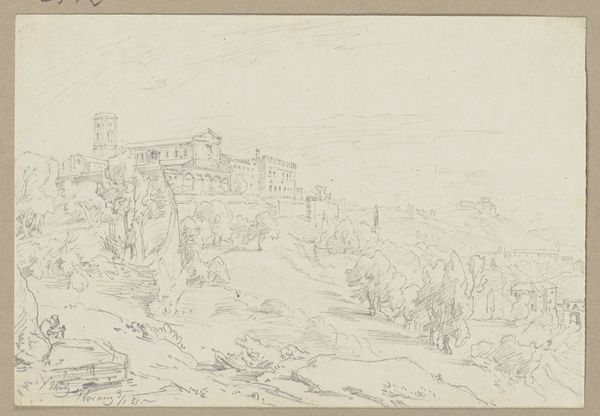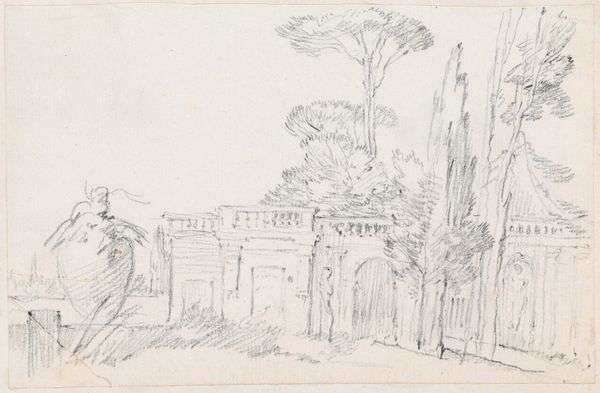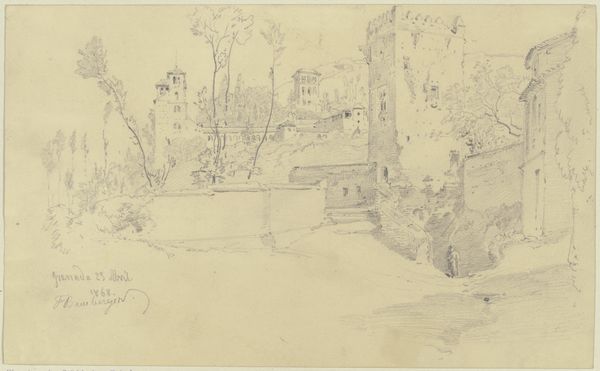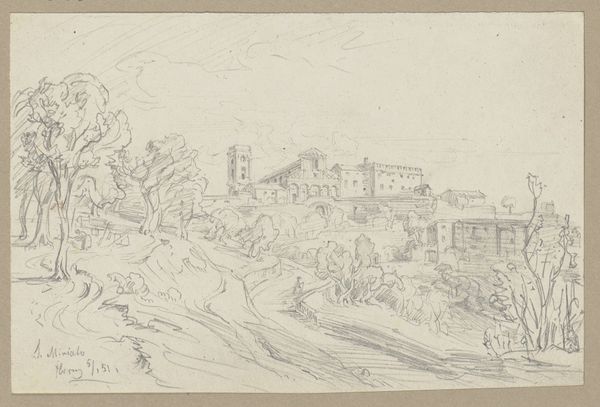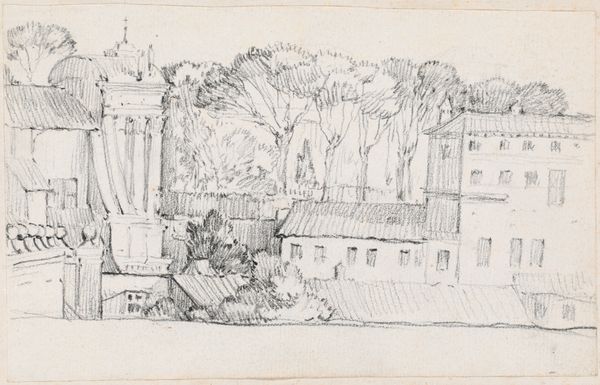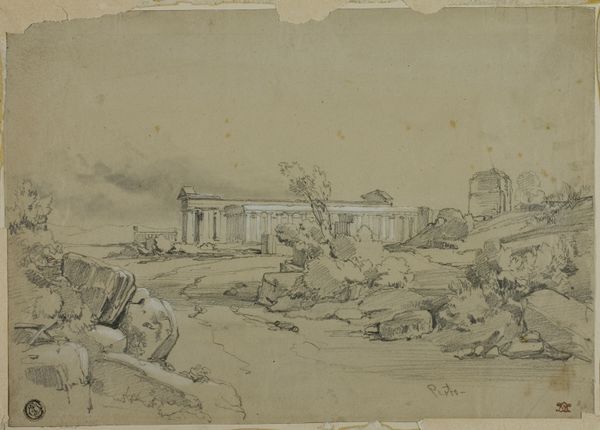
Copyright: Public Domain
Curator: Editor: We're looking at Ernst Fries’s "Ansicht von Piano di Sorrento," a pencil drawing from 1823-1826. It’s quite delicate and Romantic, I think, with a detailed rendering of the Italian landscape. What captures your attention most when you look at this work? Curator: The immediate thing I consider is the artist's *use* of pencil and paper. Look at how Fries employs the pencil not merely to depict a scene, but to actively construct it. The layered hatching builds volume and form, creating a tangible sense of depth and texture in the landscape. He's engaging in a very hands-on way with the materiality of the artistic process. Notice how the building materials – stone, vegetation – are rendered with equal attention, blurring any potential hierarchy between "high" art subjects (architecture) and "lower" ones (landscape). Editor: That's fascinating. I hadn’t thought about it in terms of breaking down hierarchies! So, would you say the way he's worked with readily available, everyday materials changes our understanding of this as an artwork, maybe versus a grand oil painting? Curator: Absolutely. It prompts us to think about the economics and accessibility of art production at this time. Pencil and paper were more easily obtained than oils and canvas, allowing for a different mode of art-making that wasn't necessarily tied to wealthy patrons. Also consider the social context. Was this drawing commissioned, or was it made as a personal study? Understanding these aspects shifts our understanding of value creation and artistic labour. Editor: I see what you mean. Considering the materials used makes me think about accessibility and artistic labor more critically than just admiring the aesthetic beauty of the scene. Thanks! Curator: Precisely! Paying attention to process and materiality helps us question the traditional narrative of artistic genius, by highlighting the work, availability, and material conditions that underpinned art making then, and now.
Comments
No comments
Be the first to comment and join the conversation on the ultimate creative platform.
